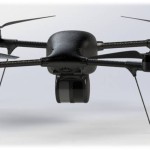By Anna Neibling
When you hear the word “swarm,” the mental image that comes to mind is probably not a good one, perhaps bringing to mind a dark cloud of stinging or otherwise nasty insects. However, there is a new swarm that focuses on doing great work. SWARM, or, Search With Aerial RC Multirotor Volunteer Search & Rescue Network, is a worldwide network of volunteers who use their drones to search for missing people. They currently have over one thousand members in forty-two different countries ranging from Africa to Switzerland, Australia to the United States.
One might ask, “Why use drones for search and rescue missions, anyway? Aren’t existing systems good enough?” The short answer is yes, but any system can be improved and optimized. Naturally, aerial search and rescue is already available in the form of manned helicopters and small planes, but these options are far more expensive and still may risk human lives. Many locations are very difficult to access with ground equipment. If a search and rescue team is lacking equipment or manpower, the likelihood of finding a lost person is significantly reduced. Drones mounted with cameras can fly into rugged and dangerous territory without the risks associated with sending humans. Drones with thermal imaging can even continue searches after dark or detect heat signatures in locations where human eyes would be useless. This would be beneficial not only in mountainous or desert environments, but also in any regions that either don’t have or underfund official search and rescue units. Drones outfitted for search and rescue operations could also be invaluable in the aftermath of natural disasters. The infrared cameras already on many search and rescue drones would also make them very useful for finding survivors of earthquakes or tsunamis and analyzing heat distribution in wildfires or volcanic eruptions.
The SWARM came about as a result of a December 2013 search and rescue mission in California. Jim Bowers, a drone pilot and artist in California, was asked to help with a search by the family of a missing person. He was able to pilot his quadcopter through rough, mountainous territory that “in some cases, is impossible to walk to.” Live camera feed from a GoPro on the drone allowed him to look for any signs of the missing person and reduce the active search radius from forty-four miles to eleven until the missing person was eventually found. Inspired by the search, he later started SWARM as an online community for drone pilots worldwide to “assist families in finding their missing family members” at no cost to the family. The group has rapidly grown since its conception.The official Facebook page currently has 2,744 members, and Mr. Bowers recently announced that he is filing for SWARM to have official status as a non-profit entity.
While the UAVs used by the volunteers vary widely, there are two primary types that they use. Fixed wing UAVs with mounted cameras can be used for longer distance search and rescue. The operator can fly from the pilot’s perspective using goggles. Multirotor UAVs can provide closer surveillance to the ground and get close to their target areas, unlike their large, manned cousins which have to stay at a higher altitude.
The only requirement to join SWARM is a radio controlled multi-rotor or a fixed wing aircraft with a video camera, but many members deck their drones out in high tech gear, comparing and improving their “builds” and giving equipment suggestions on the group’s Facebook page. Some of the additions which are commonly mentioned are tilted gimbal mounts, which basically mount a camera on a servo which can move independently of the drone; long range transmitters which allow you to fly closer to the ground; cameras ranging in sophistication from low light enhancement to infrared or other forms of thermal imaging; ground units which can allow a second person to act as a “spotter”, as well as acting as bases for additional transmitters; GPS units with a variety of functions; autopilot programs allowing drones to fly pre-programmed paths, and even programs which can automatically detect, photograph, and record the location of previously defined items of interest. As in most hobbies, there is a great deal of creativity in the way search and rescue drone operators assemble and fly their drones. The neat thing about this field is that their creativity in improving their drones may ultimately save lives.
Regardless of whether the news is good or bad, the SWARM group helps to provide families of missing people with closure. It also provides a refreshing counter to the all-too-prevalent perception of drones as instruments of death. The premise behind this group is another step on the way to a world where drones are used as commonly in saving lives as they are in ending them now.




